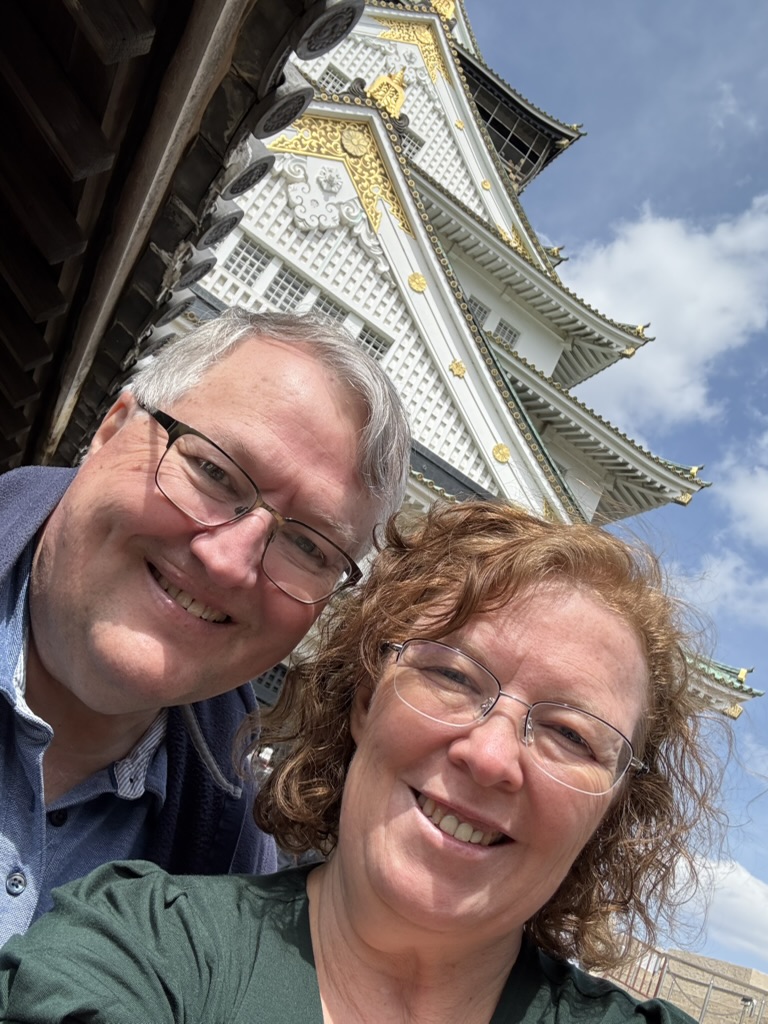
Our goal this morning is Osaka Castle. Unlike our friends, we had not yet ventured into the Subway system. They said it was pretty easy to navigate, and once you understood the stations and numbers and could read the signs showing the station numbers in each direction, it was not too bad at all. The harder part was knowing which platform to get on if the platform was not between two tracks. Still, we got it right more times than wrong and got to Osaka castle.
The Osaka Castle will have long lines to get in and long lines to get to the top. Just be ready for it. To bypass the lines on most days (or have a shorter one), get the Osaka Amazing Pass. They have 1, 2, and 3 day passes. Again, the cost of the pass does pay for itself.
The castle is surrounded by a rather large green space/park. The cherry and plum trees were blooming all over. The scene was very picturesque and many people were in the park. Some were taking photos, others had blankets laid out for a picnic, while others were just walking around enjoying the peace and tranquility.

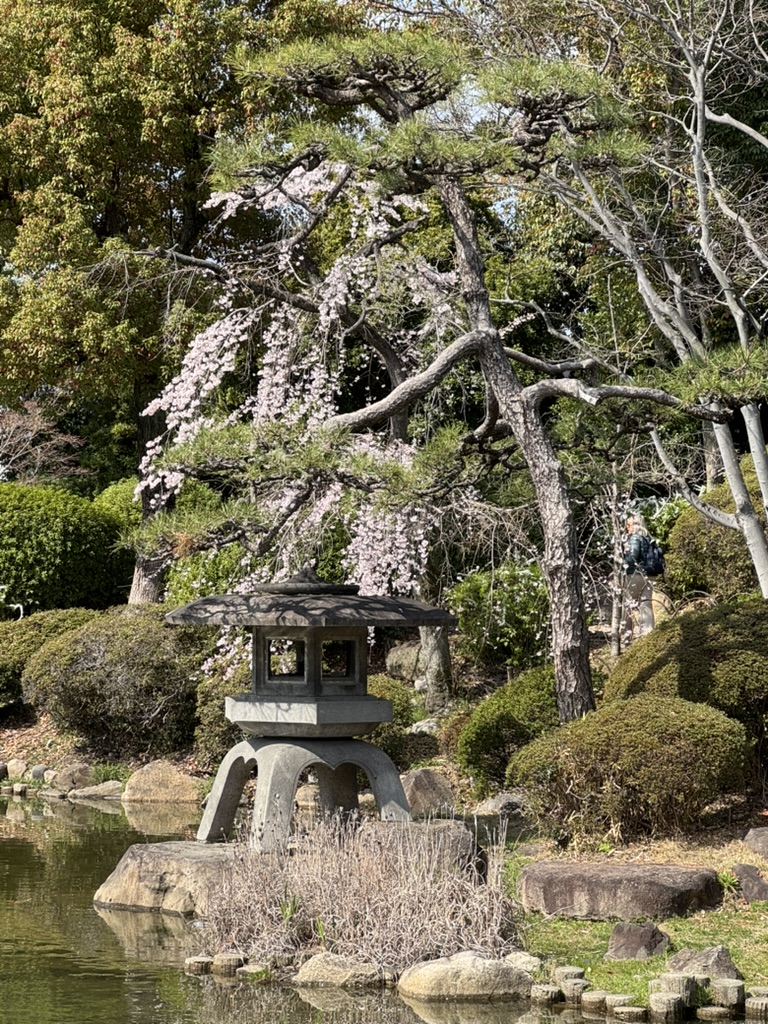
As you know, I like history and like to share a little where I can. I will always warn you when I can and history will always be indented and italicized. You have been warned.
History:
Osaka Castle, known as Osaka-jō in Japanese, is a historic landmark located in the heart of Osaka, Japan. Its construction began in 1583 under the orders of Toyotomi Hideyoshi, a powerful daimyo who sought to unify Japan during the late Sengoku period. The castle was built as a symbol of his power and as a strategic military stronghold, featuring impressive defensive structures and a commanding view of the surrounding area.
The castle’s design was influenced by traditional Japanese architecture, incorporating elements such as stone walls, moats, and wooden structures. After Hideyoshi’s death in 1598, the castle underwent several changes in ownership, eventually falling into the hands of the Tokugawa shogunate. In 1615, it was destroyed during a siege, but it was rebuilt in 1620, only to be damaged again in subsequent conflicts.
Over the centuries, Osaka Castle has been renovated and restored multiple times. The current structure, completed in 1931, is a concrete reconstruction that preserves the original design while offering modern amenities. Today, Osaka Castle is a popular tourist attraction, surrounded by beautiful parks and cherry blossoms, serving as a reminder of Japan’s rich history and the enduring legacy of the samurai era.
Inside the garden, there is a moat. It can encompasses about 2 thirds of the castle and its wall.
There are three entrances to the castle. There are two main entrances to the inner castle area: the Gokuraku-bashi Bridge (North) and the Sakuramon Gate (South). While the training fields might be considered an area to access the park, the actual entrance to the inner castle is through Sakuramon Gate. Additionally, the Otemon Gate (South) is the main entrance to the castle park, but not the inner castle area.
We opted for the training fields. There, we found a small stack of street food vendors. I was tempted to get a “10 Yen cheese coin”, but as we had eaten breakfast and I have been watching my diet, I opted not to. So from here, we approched the wall.
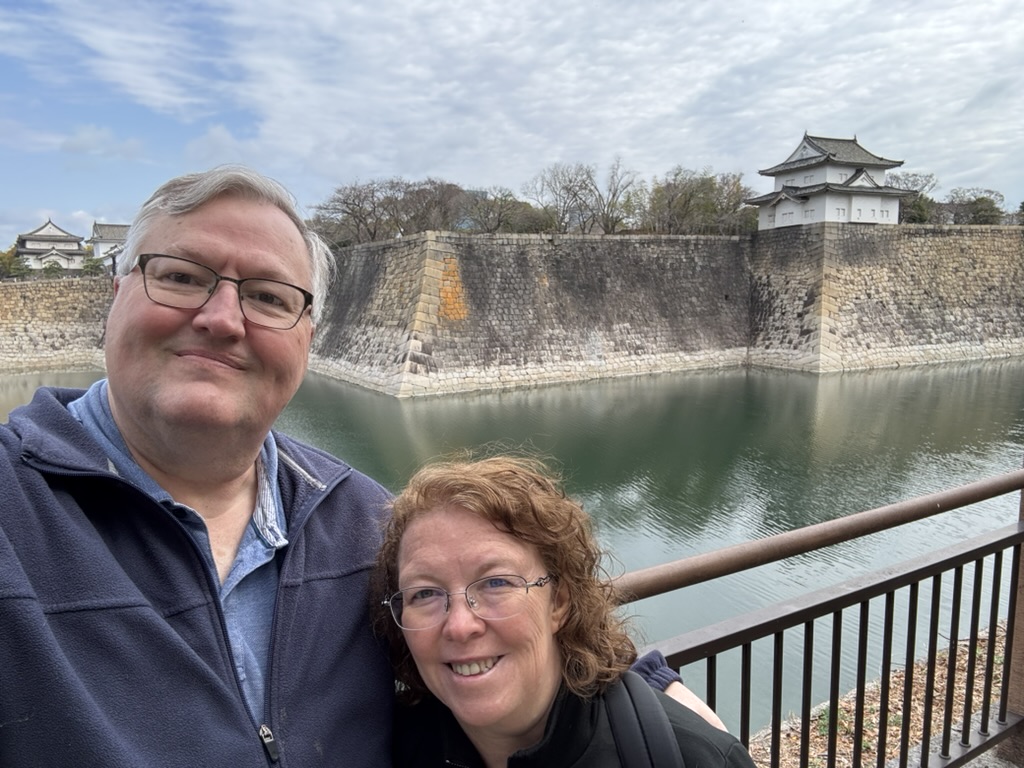
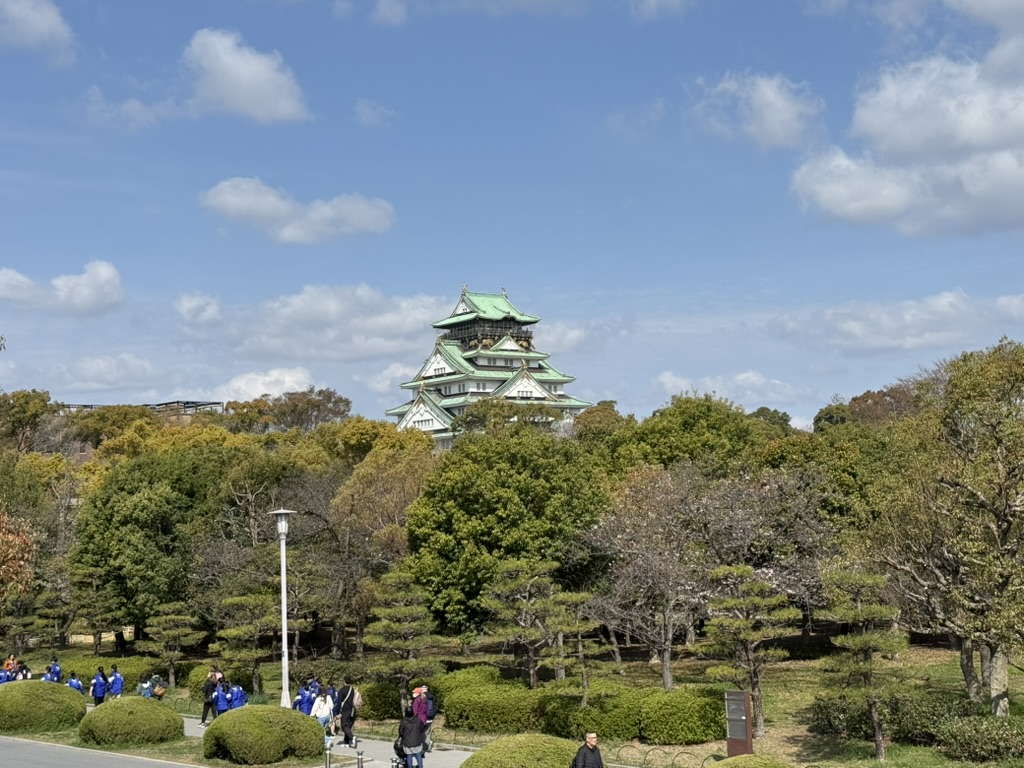
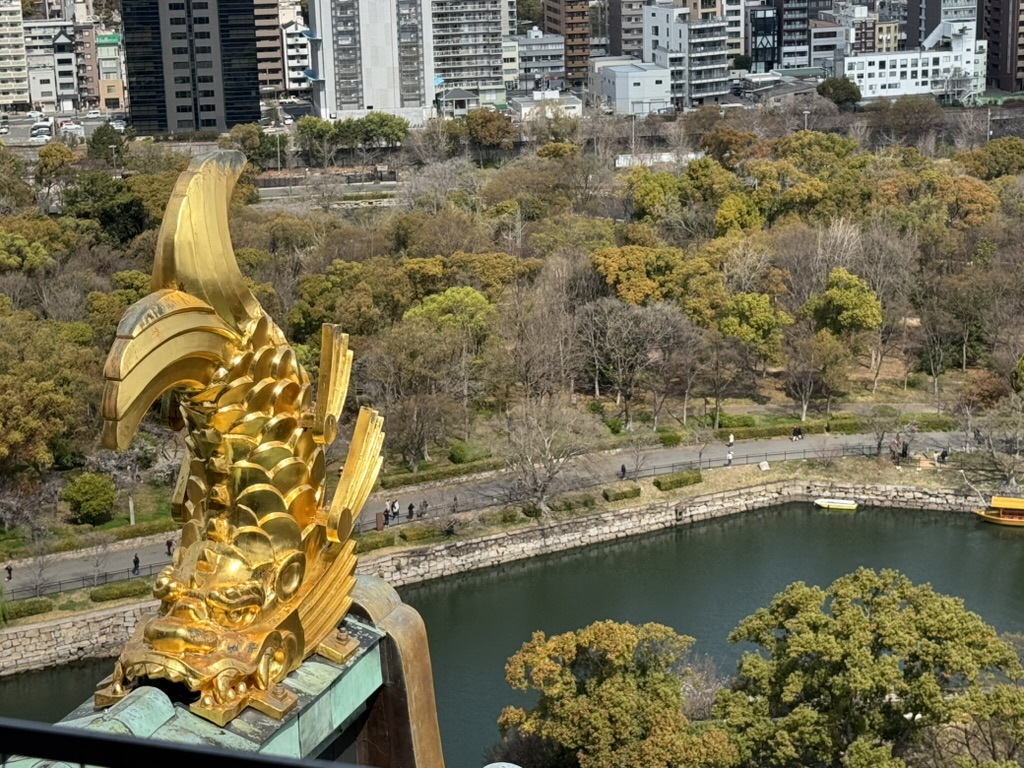
It is estimated that the wall and interior are made of over a million cut stones. These stones, many of them stamped or carved with the stone cutters marks still visible, weigh tons and have been carefully cut to fit the section place in the wall that was needed. If you look closely, some of the stones even have dove-tail style cuts what fit into the next stone to give it more of hold. Having seen the tools used, it astounds me that people in ancient times were able to build such structures. The precision was amazing.
We spent the morning exploring the grounds and climbing the stairs to the 8th floor observation deck. They did have an an elevator, but the line was long and our trip was still young (IE we had the energy).
This castle was a museum and along the way, the history of the castle and its surrounding areas unfolded. The wars, the intrigue and espionage, the families drawn together to support the emperor and each other. It was quite amazing.
The castle itself was laid out quite well for touring too. There were staircases labeled “up” and other labeled “down”. Don’t get caught going the wrong way. They have the traffic flow down to a science. Also, pay attention to the signs. It is okay in some areas to take photographs and forbidden in others. And they have floor guards and docents to remind or reprimand those who hold up cameras where they should not.
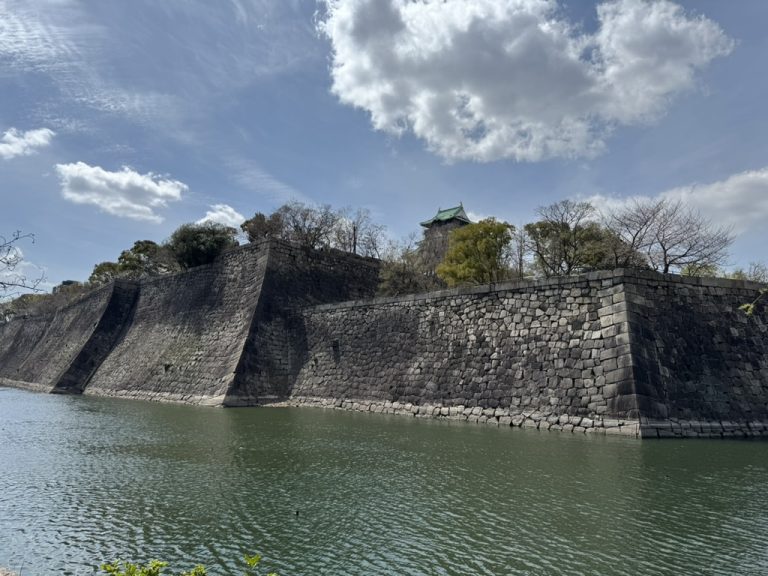
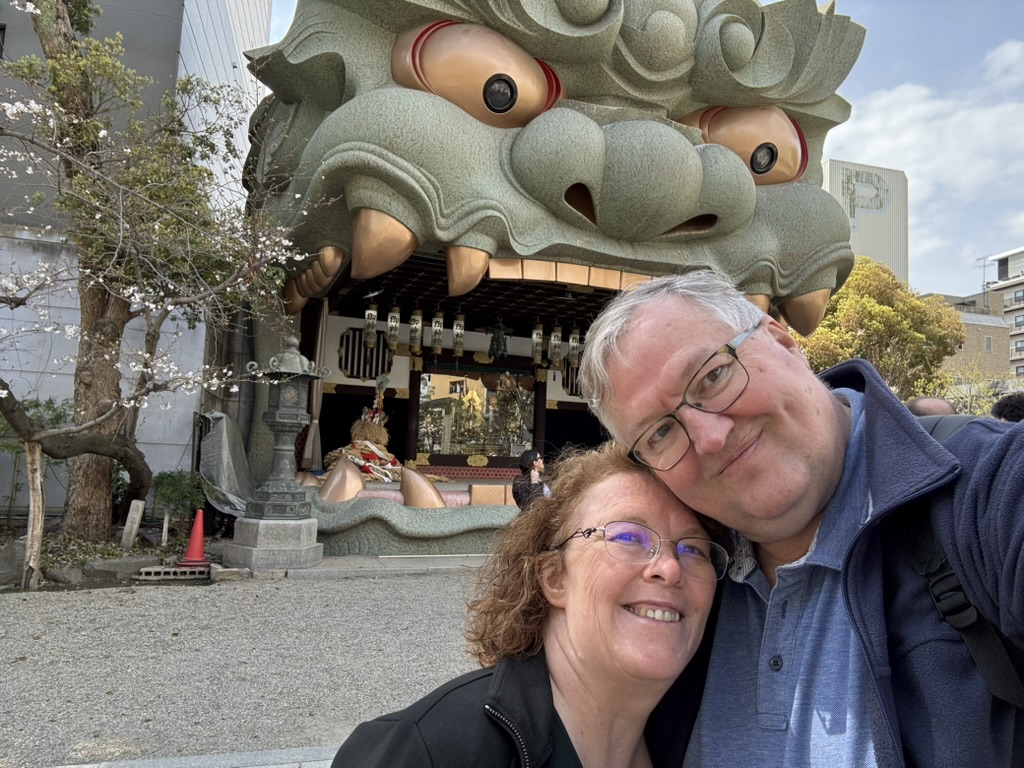

Ah, the Nambayasaka Shrine! Nestled in the heart of Osaka, this shrine is a delightful fusion of history and, dare I say, a touch of whimsy. The shrine’s most striking feature is its massive lion’s head stage, which looks like it could swallow you whole—but don’t worry, it’s just there to ward off evil spirits and maybe a few bad hair days.
The history of Nambayasaka Shrine dates back to ancient times, and it’s dedicated to the deity Susanoo-no-Mikoto, a god known for his wild antics and occasional tantrums. The shrine has been a spiritual haven for locals seeking protection and blessings, and its unique design certainly makes it stand out in the crowd of traditional shrines.
Now, let’s tackle the age-old question: what’s the difference between shrines and temples in Japan? It’s like comparing apples to oranges—or perhaps more accurately, comparing Zen to zest. Shrines (jinja) are part of Shintoism, Japan’s indigenous religion, where you might find yourself bowing to a torii gate or tossing a coin to appease the kami (spirits). Temples (tera), on the other hand, are associated with Buddhism. Here, you can often find yourself in deep contemplation, perhaps pondering life’s mysteries or just wondering if you left the kettle on.
So, while both shrines and temples offer spiritual solace, they cater to different celestial beings and philosophical musings. And remember, whether you’re at a shrine or a temple, it’s always good practice to be respectful—unless you’re trying to make the gods chuckle with your mismatched socks!
Teresa came here to make an offering in hopes of warding off her evil spirits. No, not me, though seeing the lin head, I felt like running, so maybe. No, hers is whatever is causing her malidy, which has been going on for years now. I wish I could say it worked, but legend says it can take time.
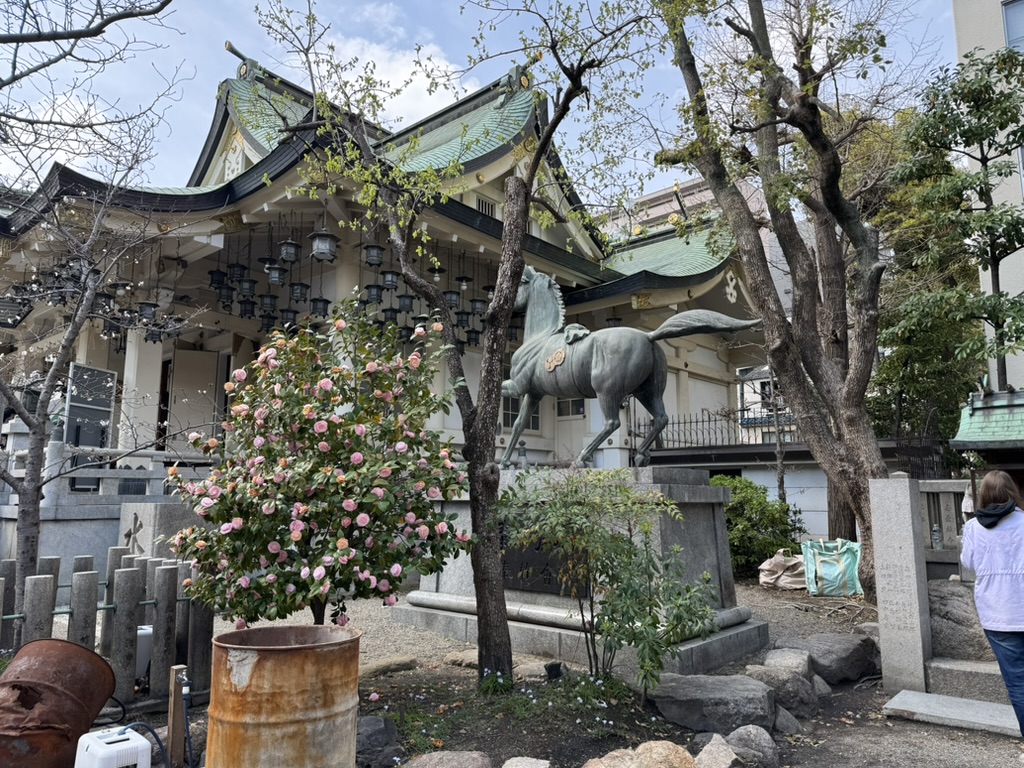
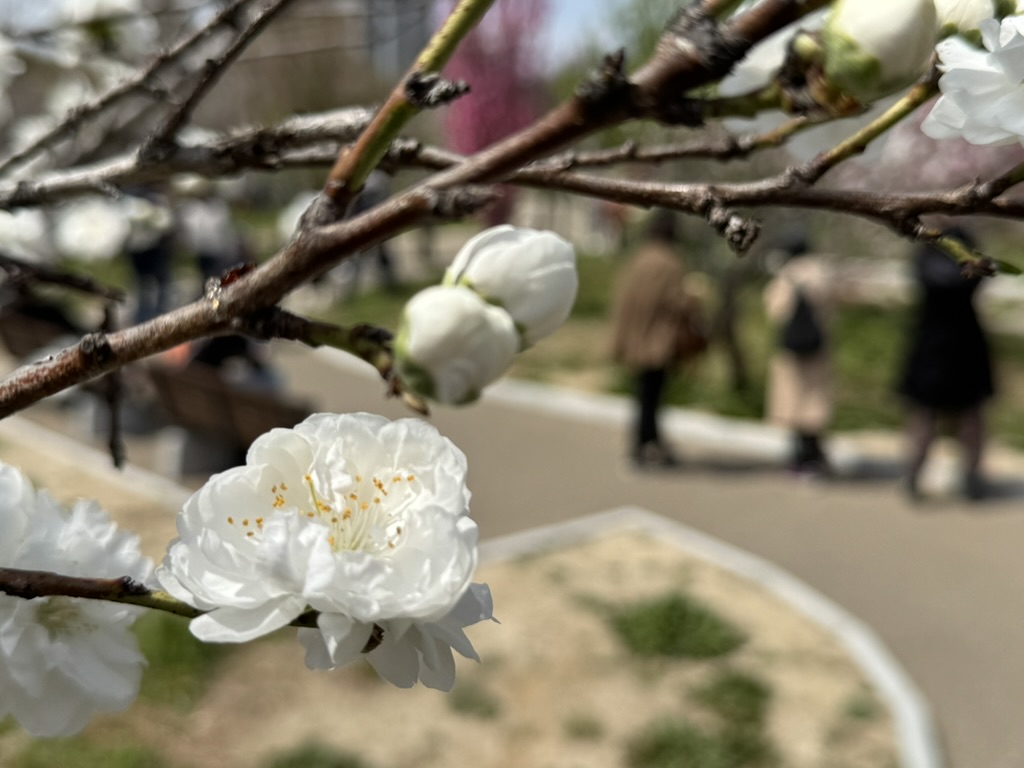


And now, our special guests and travel companions, Megan and Mike (M&M) are back. We met up with them at the hotel after a short rest a freshening up. It was a short walk again to Dotonbori and a Osaka Bar Hopping and Food tour that M&M had booked for the four of us through Viator.
We met up with our guide after a bit of confusion on our part. We were looking for an orange sign on the building, but it was a side walk/street sign. She found us and after some introductions, she took us to the first restaurant of three. Now, here’s a little tip if you want to remember the places. First, take a picture of the place. Second, take a picture of the menu. And third, turn locations of your phone’s camera. Do any of those and it will help. I did none of those.
Still we learned that the restaurants and bars where set up for the local guides by their tour companies. They knew them well and knew the menu well too. Our guide was able to pair the food to the drinks, or visa versa. I am picky on my drinks, liking sweeter drinks. Teresa is a vegetarian, and nether Mike nor Megan are big on seafood. Yet, with all this, our guide did pretty well.
Our second restaurant specialized in tempora. Again, the pairings of Saki and other cocktails was spot on. I will also warn you. Typically, bars and restaurants are non-smoking in Japan. Smoking in public can get you a 1000 yen citation. None of us are smokers and Teresa is especially sensitive. This place had smokers and the guide and staff apologized, but there was little they could do.
We ended the evening in a small karaoke bar. And, when I say small, it had two tables and a few stills at the bar. Still, mics were given and we did break into a little song. Neil Diamond is known around the world.
We bid our guide farewell and we went back to the hotel. Teresa and I had a trip tomorrow, to a Buddhist Temple and Shrine.

